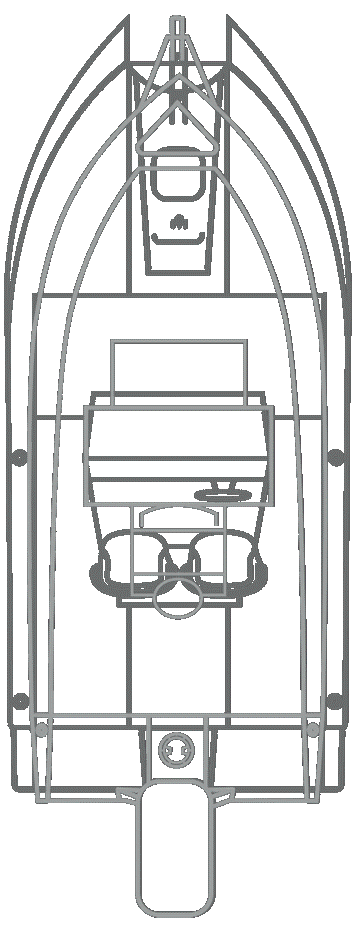Your cart is currently empty!
Why Choose an Aluminium Powercat Over a Monohull?
Powercat boats are gaining popularity due to their superior stability, smooth ride, and impressive fuel efficiency. Unlike monohulls, Powercats feature two hulls that significantly reduce side-to-side motion and improve buoyancy. This gives you a much safer and more comfortable experience, even in rough seas.

Stability
A Powercat’s twin hulls provide enhanced stability, drastically reducing the risk of rolling. The design makes these boats much safer in unpredictable conditions, providing a smoother ride and greater resistance to capsizing.
A Smooth and Stable Ride
Underway, a well-designed Powercat, whether of a planing, semi-displacement or displacement hull type, will produce a much smoother and stable ride than the average monohull. With its dual-hull configuration, a Powercat minimizes roll and provides enhanced comfort in choppy waters, making it ideal for both leisure cruising and offshore adventures.
Twin Engine Reliability
Should you lose power in one engine you can get home safely on the other and with many setups still get the boat on the plane. The independent steering means you still track straight and turn with ease getting you home safely. Match this with independent fuel tanks and starter batteries for even greater peace of mind.
Air cushion effect
A Powercat at speed gains lift and cushioning from spray and air being pressured through between the hulls. As well, there is the advantage of two narrow hulls slicing smoothly through the waves.
More Usable Space

The wide beam of a Powercat maximizes deck space, giving you more room for fishing, seating, or storage. This spacious layout makes them ideal for leisure cruising or commercial use. In our centre console boats, this means you get 360 degree fishing making them an awesome fishing boat.
Safety
With its dual-hull design, a Powercat offers superior stability, drastically reducing the risk of rolling, even in rough seas. The wide stance of the twin hulls spreads the vessel’s weight over a larger surface area, which improves buoyancy and reduces side-to-side motion. This enhanced stability not only ensures a smoother, more comfortable ride but also makes the Powercat a safer choice in unpredictable conditions, offering greater resistance to capsizing compared to monohull designs. Whether you’re leisure cruising or embarking on an offshore adventure, the Powercat provides a safer, more stable experience for all aboard.
Fuel Efficiency
Powercats may take slightly more power to get on plane, but once they are there, they tend to run more efficiently than monohulls. This efficiency makes them an excellent choice for long-distance cruising or offshore fishing.
Great use of underfloor areas
Two hulls also offer greater use of underfloor areas – all space can be used for berths, tankage, refrigeration and accessible stowage

Displacement Hulls
The Powercat with displacement hulls is a different beast altogether. Depending on the hull sizes it is not unusual for ultra efficient speeds well in excess of 20 knots to be achieved in the economical displacement mode. Hence the proliferation of large catamaran ferries in service all over the world.
Superior Load Carrying
With their dual-hull design, Powercats can carry much larger loads without compromising stability, making them perfect for both recreational use and heavy-duty commercial work.
Enhanced Maneuverability
Powercats outshine monohulls in terms of maneuverability. With twin engines and independently controlled steering, Powercats can make tight turns and even spin 360 degrees within their own length, making docking and navigation in tight spaces easier.

Dry and Comfortable
The narrow hulls of a Powercat slice smoothly through the water, throwing minimal spray, keeping the ride dry. This feature makes Powercats ideal for all-weather boating.
Haulouts, Marinas & Beaching
Shipyards tend to like hauling out a catamaran because they can be sat on blocks and require no lateral support. Smaller Powercats with outboards can be easily beached.
Cost Effective and Spacious
Despite the higher construction costs, Powercats offer superior value for money. The extra space, stability, and comfort provided by the twin hulls make them more spacious than similar-sized monohulls. It’s commonly said that a 10-metre Powercat compares in size to a 12-metre monohull, and for smaller models, like a 5-metre Powercat, you’ll enjoy the space and usability closer to that of a 6.5 metre monohull. So, if your purchase decision is based on available deck and internal space, a Powercat offers superior value for money, providing more room for less when compared length-for-length.
Sea Trial
The ultimate test as to the merits of a Powercat is a sea trial, get in touch today to see about getting a sea trial

